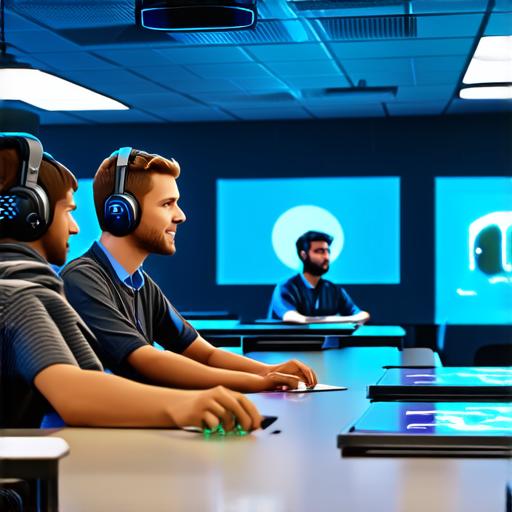Introduction

Augmented reality (AR) is a technology that has been rapidly gaining popularity in recent years, especially in the education sector. AR refers to the superimposition of digital information onto the real world, allowing users to interact with and manipulate virtual objects in a variety of ways. In this article, we will explore how augmented reality enhances learning in education and why it is becoming an increasingly popular tool for educators.
The Advantages of Augmented Reality in Education
1. Enhanced Engagement
One of the main advantages of using AR in education is that it increases student engagement. By allowing students to interact with virtual objects and environments, AR provides a more immersive learning experience that can be both fun and educational. This increased engagement has been shown to lead to better learning outcomes, as students are more likely to retain information when they are actively engaged in the learning process.
2. Improved Visualization
Another advantage of using AR in education is that it allows for improved visualization of complex concepts. AR can be used to create 3D models of objects and environments that would be difficult or impossible to replicate in the real world. This makes it easier for students to understand abstract concepts and visualize how they relate to the real world.
3. Increased Interactivity
AR also allows for increased interactivity, as students can manipulate virtual objects and environments in a variety of ways. For example, an AR app could be used to simulate a dissection of a plant or animal, allowing students to explore the inner workings of the organism without harming it. This increased interactivity can help students develop critical thinking and problem-solving skills, as they learn to navigate virtual environments and solve challenges.
4. Personalized Learning
AR also allows for personalized learning experiences. By using AR, educators can create customized learning paths for each student, based on their individual needs and interests. This allows students to learn at their own pace and in their own way, leading to better learning outcomes and increased satisfaction with the learning process.
Case Studies of Augmented Reality in Education
1. Aurasma:
Aurasma is an AR app that has been used in a variety of educational settings, from K-12 schools to higher education institutions. One example of its use in education is in the field of biology, where it has been used to create interactive learning experiences around the human body. Students can use Aurasma to explore different parts of the body, zooming in on specific organs and systems to learn more about their function and anatomy.
2. IKEA Place:
IKEA Place is another AR app that has been used in education, specifically in the field of interior design. Students can use IKEA Place to visualize different furniture and decor options in a virtual room, allowing them to see how different pieces will look and fit together. This can help students develop their spatial reasoning skills and learn more about design principles.
3. Endless Alphabet:
Endless Alphabet is an AR app that has been used in early childhood education to teach the alphabet and basic literacy skills. The app uses 3D letters that float around the screen, allowing children to interact with them in a variety of ways. Children can touch and drag the letters to create different words and phrases, making the learning experience both fun and engaging.
The Future of Augmented Reality in Education
1. Virtual Field Trips:
AR could be used to create virtual field trips to different parts of the world, allowing students to explore new environments and learn about different cultures without ever leaving the classroom.
2. Language Learning:
AR could also be used to help students learn languages by providing them with immersive language learning experiences in virtual environments where they can interact with native speakers and practice their language skills.
3. History and Social Studies:
AR could be used to create interactive history and social studies lessons, allowing students to explore different time periods and cultures through virtual environments and artifacts.
Conclusion
In conclusion, augmented reality is a powerful tool that has the potential to transform the way we approach education.
